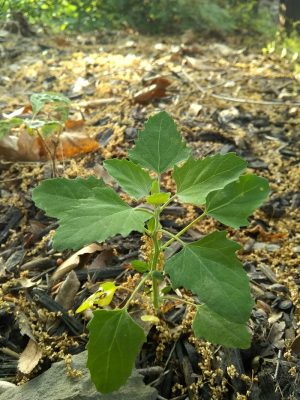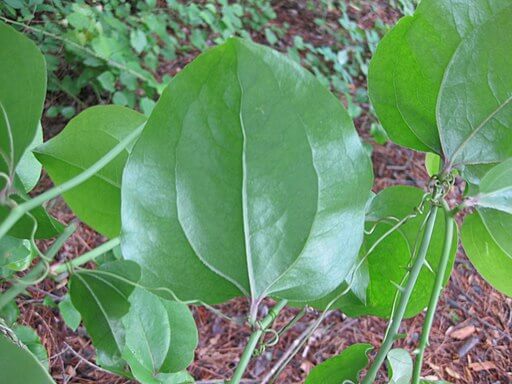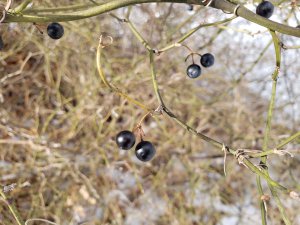This web site comprises affiliate hyperlinks. As an Amazon Affiliate, I earn a fee from qualifying purchases at no additional value to you. Full Disclosure Right here.
Whenever you inform individuals you forage for wild edible crops, one of many first questions you typically get is, “What are you able to truly prepare dinner with these items?” The final impression is that, whereas technically edible, most wild crops can’t probably be notably tasty. Nonetheless, this couldn’t be farther from the reality.
A alternative specimen picked on the proper time shall be at the very least, if no more, flavorful and scrumptious than your favourite store-bought greens. And since there are a variety of frequent wild crops that style similar to spinach, so in terms of the sensible query of cooking what you collect, these spinach-like crops are an excellent place to start out.
This text will give a number of completely different wild spinach fashion crops that may be substituted in any recipe that requires spinach, with scrumptious outcomes. Higher but, every of those is dietary powerhouses which can be much more full of nutritional vitamins and minerals than any spinach you should buy from the grocery retailer or pluck out of your backyard. Wild crops truely have so much to supply us as preppers and survivalists.
Under I’ll undergo the place you will discover these wild spinach alternate options together with how one can determine them. One, particularly, has vital notes on protected harvesting and preparation, so I’ll undergo that as nicely.
For every of those crops, in case it wasn’t apparent, the leaves are the half you need to harvest in case you are searching for a spinach substitute. All the time wash them nicely in chilly water earlier than cooking. Every of them must be harvested younger, as youthful leaves will comprise extra diet and have a preferable texture and taste than older ones. As a common rule, the youthful, the higher!
Lamb’s Quarters/Goosefoot Group (Chenopodium album), (Chenopodium berlandieri), Others


This plant is straightforward to determine, the one different crops that look comparable are in the identical household—and are edible and style like spinach as nicely! Lamb’s quarters can typically be present in city areas, so even should you dwell in a giant metropolis, you’ll be able to be taught to determine it (though I wouldn’t harvest something in an city setting that’s proper by a busy street).
Lamb’s Quarters Habitat


This plant grows like a weed. It loves disturbed areas like previous heaps and building websites, however can also be generally present in wooded clearings or fields and alongside riversides. Typically entire heaps shall be taken over by this edible plant. Simply watch out consuming any crops which can be rising in heaps which were used for business lately.
Figuring out Lamb’s Quarters


Lamb’s quarters’ (chenopodium spp.) leaves are differentiated by their distinctive form and the powdery white coating on them, typically making the plant seem from a distance to be lined in mud. This coating causes water to bead off the leaves.
The leaves are comparatively small with barely toothed edges, formed roughly like little triangular goose toes. This is the reason crops within the household are also known as goosefoot. Various kinds of goosefoot can have narrower and different-shaped leaves, however the powdery coating is an efficient giveaway that you’ve one of many alternative edible varieties. The primary pair of leaves on lamb’s quarters is reverse, and different leaf pairs are alternate on the stems. Leaves have tiny white hairs on them.
Flowers are tiny, inexperienced, and don’t have any petals. The plant can get very bushy, however very not often grows greater than a few yards tall.
Consuming & Cooking Lamb’s Quarters


Along with the leaves, the flowers, shoots, and roots are additionally edible. When you harvest the younger leaves, prepare dinner them as you’ll spinach in your dish—no changes needed! You can even dehydrate the leaves for long-term storage.
Like spinach, lamb’s quarters comprises a excessive degree of oxalic acid. That is principally destroyed by cooking, however take into accout should you’re having fun with it uncooked in a salad uncooked lamb’s quarters salad. That is notably true for people who find themselves susceptible to kidney stones.
Personally, I don’t fear an excessive amount of about this warning. Preserve your weight loss plan diverse, and by no means eat extreme quantities of any single plant. In any case, you don’t see warnings on luggage of spinach (which comprises excessive ranges of the identical compounds), however in terms of foraged greens, a warning feels acceptable. Lamb’s quarters is a good addition to any forager’s basket.
Palmer’s Amaranth (Amaranthus palmieri)


This plant is expounded to the goosefoot group of crops of which lamb’s quarters is a member. Sure forms of amaranth are in style backyard ornamentals, prized for his or her dramatic, colourful leaves and flowers. Amaranth seeds are additionally a well-liked well being meals. What many don’t understand is, the leaves of amaranth are a pleasant leafy inexperienced that makes for a healthful and scrumptious stand-in for spinach.
Palmer’s amaranth is thought-about invasive in a lot of the United States exterior the southwest, so you’ll be able to forage as a lot as you need and never fear about environmental injury. Nonetheless, the plant accumulates chemical substances equivalent to these present in herbicide and fertilizer, so be very cautious if harvesting it wherever close to building websites or farms that will use these substances.
Palmer Amaranth Habitat


Palmer amaranth loves waste zones and disturbed areas like the sides of farms, railroad tracks, and building websites—simply the forms of habitats the place you need to keep away from harvesting it, because of using dangerous chemical substances the plant will take in.
Mercifully, Palmer amaranth will also be discovered alongside trails, typically sprouting up alongside the trampled routes the place deer, moose, or different sport cross by way of.
Figuring out Palmer Amaranth


Palmer Amaranth grows massive and bushy, rising as much as a yard or so tall. Stems are easy and could be inexperienced however typically are purple, particularly because the plant ages. Stems typically with small hairs, and the ovate to diamond-shaped leaves develop in a symmetrical rosette sample across the central stem.
Leaves are extra ovate in youthful specimens and could be fuzzy or hairless relying on the kind of amaranth you have got discovered. Examine the bottoms of leaves for outstanding veins. Typically, however not at all times, leaves carry a V-shaped watermark. Leaves additionally develop wavy edges as they mature.
The flowers are lengthy could be bristly or comfortable and fuzzy, and from whitish-green to purple. They appear like lengthy, fuzzy caterpillars.
Stems and cotyledons (the “stem” connecting the leaf to the stalk) could be reddish, and cotyledons are skinny and really lengthy. In contrast to wild palmer amaranth, varieties grown for backyard decorative functions nearly at all times have the watermark on the leaves, together with purple leaves and flowers.
Consuming & Cooking Palmer Amaranth


Whether or not you eat the leaves or the seeds, Palmer amaranth is a dietary superfood. Eat the leaves uncooked or prepare dinner them as you’ll spinach, and toss them into your recipe! Suppose quiche, omelets, sautéed, steamed…if you are able to do it with spinach, you are able to do it equally with amaranth.
Pokeweed (Phytolacca americana)


Pokeweed is a really particular plant—so particular, actually, I nearly didn’t embody it on this checklist. If you happen to harvest pokeweed leaves on the incorrect time or don’t course of them appropriately, you’ll be able to grow to be poisoned after consuming it.
The important thing with pokeweed is to reap it younger. All leafy greens are tastiest and most nutritious of their younger section, however with pokeweed, it’s a matter of acquiring the leaves earlier than the concentrations of poisonous compounds grow to be too excessive.
Completely different foragers use completely different guidelines of thumb for when it’s “too late” to reap from any given pokeweed plant. Some say it’s positive to pluck the leaves so long as the berries haven’t appeared, whereas others advise in opposition to harvesting any plant taller than about six inches. These are the acute ends of the spectrum. I’ve harvested crops that had been a foot or taller with no issues, however any taller than that and I’d draw back.
Additionally, some assets advocate sporting gloves to reap pokeweed leaves, although the chance of getting a response from touching the leaves are low. The roots are a distinct story, nonetheless, and may by no means be dealt with with out gloves. Fortunately, to reap the leaves, you by no means need to dig up a plant.
Consuming pokeweed leaves contain a boiling course of that you need to full earlier than cooking, with a view to take away poisonous compounds from the leaves. We’ll get into this extra beneath.
Pokeweed Habitat


Pokeweed likes disturbed areas like path sides, constructing websites, and deserted heaps. You can even discover it in wooded meadows with moist soil. As a result of it thrives in disturbed areas, you would possibly see it popping up after a robust storm knocks down numerous bushes.
Figuring out Pokeweed


Pokeweed is most simply discovered by memorizing its dramatic blackberries that seem throughout the summer time, however pokeweed has different traits you need to use as nicely. Rising on grape-like strands, the berries begin out white, after which grow to be black or darkish purple. Pokeweed stems are purple or have purple streaks, particularly older specimens.
Leaves are alternate. In younger pokeweed crops, leaves are considerably egg-shaped, however grow to be lance-shaped and ruffled as they mature. Flowers are white to inexperienced and type on lengthy clusters. Pokeweed crops can fairly massive and bushy—as much as ten toes, in some circumstances.
Consuming & Cooking Pokeweed


With pokeweed, solely ever eat the younger leaves and younger shoots. Consuming different components, or any a part of the plant at a mature stage, isn’t well worth the threat.
Upon getting your younger pokeweed leaves, you want to course of out the toxins earlier than cooking them with. This can be a little bit of a course of and makes it a greater different for people who desire a cooked wild spinach different. First, rinse them in a sieve, then convey a pot of water to boil. Add the leaves and boil them for twenty minutes.
Take away the leaves and rinse underneath chilly water (they are going to be extraordinarily comfortable.) Rinse the pot, convey a brand new pot to boil, and boil once more for twenty extra minutes. Repeat a 3rd time, and now your leaves are suitable for eating and able to use in recipes.
It’s a little bit of a labor-intensive course of, however pokeweed tends to develop in nice portions in areas the place it may be discovered. It’s such a culturally-important meals to the American south that complete festivals are held to rejoice it, full with cook-offs. Poke sallet, a conventional southern facet dish consisting of sautéed pokeweed, is in style sufficient that it was as soon as offered in cans at grocery shops.
Greenbrier
(Smilax rotundifolia)


Greenbrier is usually referred to as noticed briers within the Southern United States due to the sharp spines that may catch in your clothes. This plant just isn’t thought-about fascinating on farms for this very purpose. It additionally grows up bushes. Whereas it was once foraged and eaten commonly, it’s uncommon for individuals to eat it now.
Habitat
Greenbrier is discovered within the understory of forests or on the edges. It likes to develop up bushes. It’s typically discovered combined in with blackberry, raspberry, barberry, and different understorty prickly crops. Disturbed areas on the forest flooring are a first-rate spot for Greenbrier.
Figuring out
It is extremely simple to determine this vine. There are sharp thorns on the principle vine. The leaves are massive. The vine will solely obtain a diameter of round a 1/4 inch. It likes to develop tall, typically reaching heights of 10-20 toes. One have to be cautious to not get caught on the thorns. They’re sharp and eager. Black berries type on Greenbrier within the Fall and keep on for a lot of the winter.


Greenbrier berries within the winter.
Consuming and Cooking Greenbrier
The brand new spring development of Greenbrier could be eaten uncooked or cooked so it is a superb wild spinach different. It seems like it might be an awesome addition to a Spring salad. Some describe the flavour as much like asparagus. You’ll be able to eat Greenbrier leaves at anytime however the get more durable the older they get so it’s best to focus on new development for consuming. The berries could be consumed however they’re so seedy that most individuals don’t trouble.
Closing Ideas
With information of how one can prepare dinner with a number of frequent wild crops, you’ll be able to spruce up far more than simply your recipes. Wild varieties just about universally exceed their store-bought counterparts when it comes to dietary content material and sometimes style richer—if solely as a result of they’re a lot brisker.
There are lots of different wild edible spinach alternate options on the market. It’s a good suggestion to get a information to edible crops in your space and even take a category at a group faculty or middle to learn to appropriately determine them.
They’re additionally a variety of enjoyable to search for, and really rewarding to search out. That is doubly true when you have got a scrumptious recipe simply ready to be cooked! Be at liberty to share your favourite recipes within the feedback beneath. The world of untamed crops is huge and there may be at all times a lot extra to be taught.
Creator Bio: Eric is a nature-loving author, expertise junkie, and former Boy Scout who by no means forgot that time-honored Scout Motto: Be ready. Except for tenting and survival, he loves writing about journey, historical past, and something he finds unusual and distinctive!
If you happen to loved this text, take into account following our Fb web page.
Searching for extra assist with foraging? Get LIFELINE
